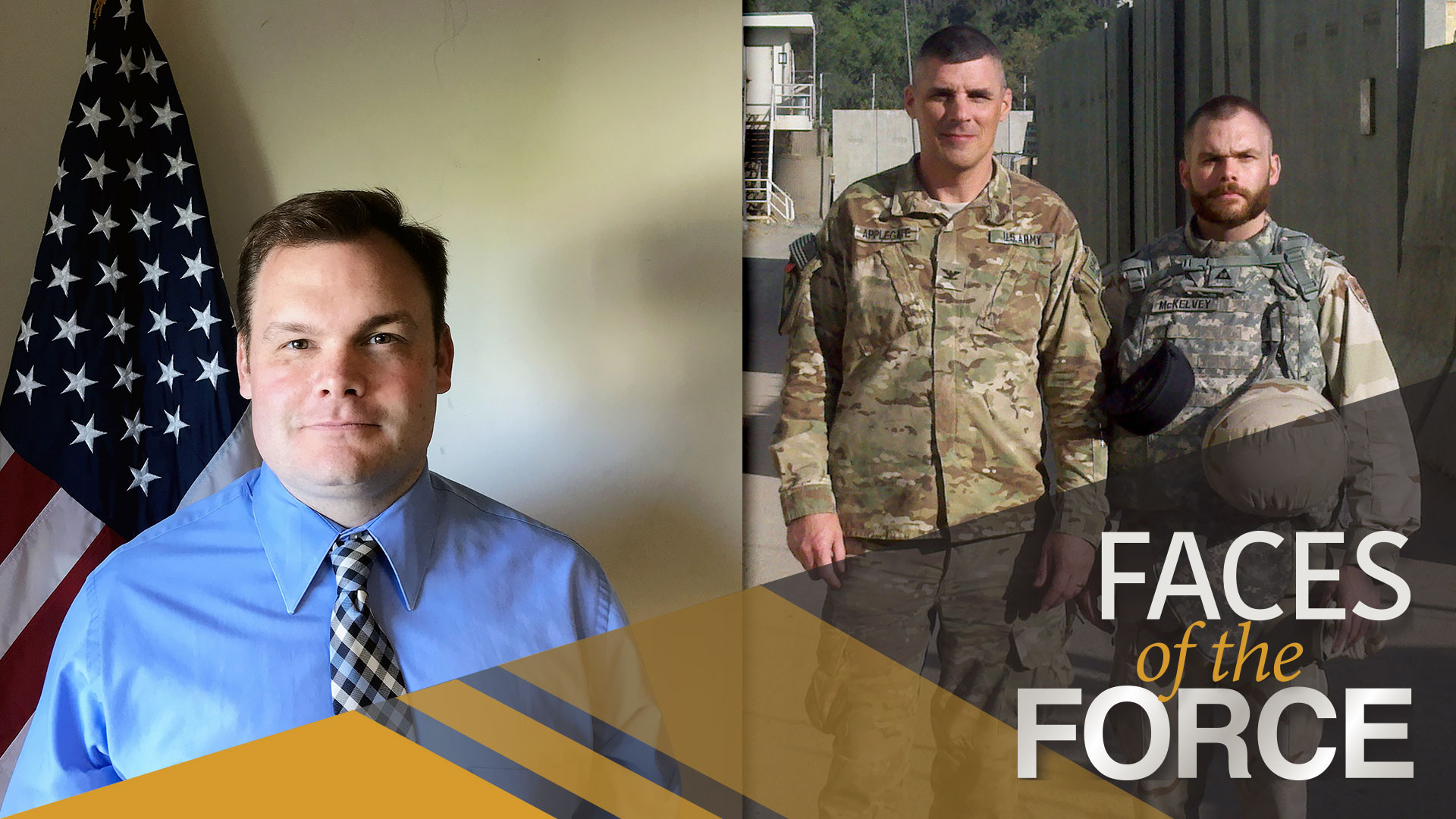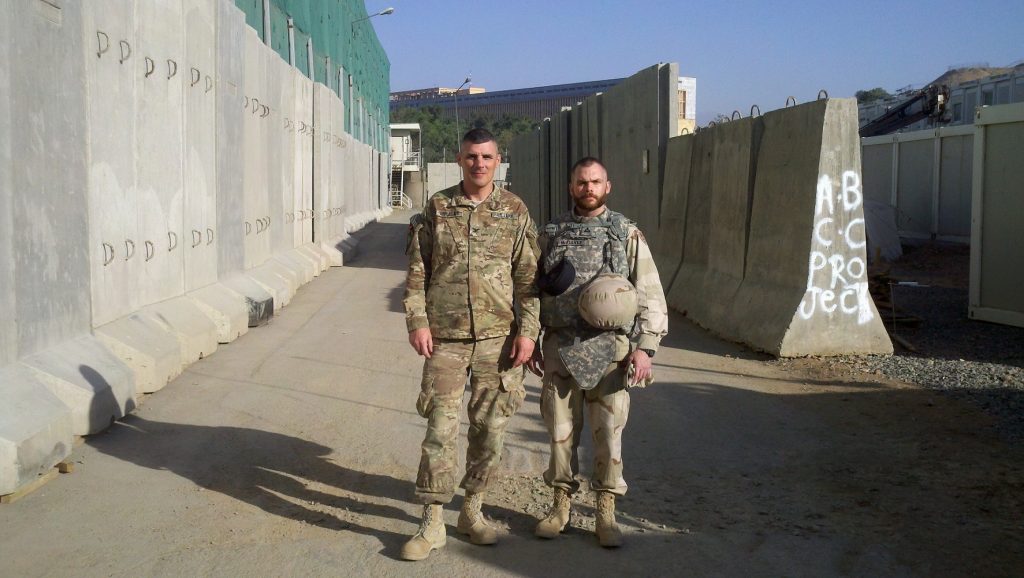
Robert F. McKelvey III
COMMAND/ORGANIZATION: Cybersecurity and Electromagnetic Activities (CEMA) Combat Systems Division; Survivability Evaluation Directorate; U.S. Army Evaluation Center; U.S. Army Test and Evaluation Command
TITLE: CEMA evaluator and test manager
YEARS OF SERVICE IN WORKFORCE: 14
DAWIA CERTIFICATIONS: Level III in test and evaluation; Level II in program management
EDUCATION: M.S. in program management and public policy, Naval Postgraduate School; B.S. in mechanical engineering, Penn State University
AWARDS: Superior Civilian Service Award; Commander’s Award for Civilian Service; Achievement Medal for Civilian Service; Secretary of Defense Medal for Global War on Terrorism
It’s all connected
by Ms. Susan l. Follett
Turns out your kindergarten teacher was right: Learning to play nicely with others is a vital skill, no matter your profession. “Acquisition work always comes down to people,” said Robert F. McKelvey III, cybersecurity and electromagnetic activities (CEMA) evaluator and test manager for the U.S. Army Evaluation Center (AEC). “Everyone in the acquisition workforce has a job to do and sometimes those jobs are at odds with one another; that’s by design. Those intellectual impacts can lead to a better product for the Soldier and DOD, but we need to show respect for our co-workers and their missions across the community. If you can package your expertise in a respectful way that is useful to your customers on their schedule, you’ll be unstoppable.”
McKelvey is part of the CEMA Combat Systems Division within AEC’s Survivability Evaluation Directorate, which focuses on survivability, ballistic and nonballistic battlefield threats, live-fire evaluations and reports, vulnerability and lethality of Army and joint systems, and cybersecurity in assessing information assurance and interoperability.
AEC, a subordinate organization of the U.S. Army Test and Evaluation Command (ATEC), “is the Army’s ‘Consumer Reports,’ ” said McKelvey, tasked with characterizing the readiness of a broad portfolio of programs for integration into the operational environment. Surprisingly, he noted, most Soldiers are unaware of the organization’s existence. “The typical Army unit does not routinely interact with AEC,” he noted. “But once they understand AEC’s mission and the multitude of systems being supported, Soldiers tend to be surprised with how much we actually do and have to offer in the realm of system effectiveness, suitability and survivability to ensure their safety on the battlefield.”
McKelvey studied mechanical engineering in college, with the goal of designing cars, but he switched to systems engineering after the events of 9/11. His work leading the vehicle dynamics team that was part of Penn State University’s entry into the Defense Advanced Research Projects Agency Grand Challenge attracted the attention of the Survivability Evaluation Directorate at a job fair. His first acquisition position was as a nonballistic survivability analyst working on Future Combat Systems within the Survivability Evaluation Directorate, and he has remained there for 14 years, tackling different assignments at increasing degrees of responsibility and difficulty.
“I’ve learned that there are lots of opportunities for motivated people to help move a project forward,” he noted. One of his first opportunities came not long after he was hired. “I had a great first mentor in Capt. Tom Stocks and a supportive division chief in Jim Myers. They took me under their wing and helped me build a strong foundation in the tenets of survivability.” In 2007, Myers put McKelvey in charge of the Mine Resistant Ambush Protected (MRAP) vehicle program, which introduced him to joint operations, support contracting and condensed schedules. “I managed to find my way through interoperability and compatibility assessments for government-furnished equipment suites for MRAPs,” he said. Eventually, McKelvey led efforts to ensure that the suites—additional equipment such as sensors, jammers and antennas—installed by the Army, Marine Corps, Navy, Air Force and U.S. Special Operations Command on MRAPs would be effective in an operational environment.
That background was invaluable in 2011 when McKelvey became lead evaluator and test manager on rocket-propelled grenade defeat systems and served as lead live-fire evaluator for the MRAP All-Terrain Vehicle (M-ATV). “I planned, scheduled and executed the first test of homemade explosives on an M-ATV underbody improvement kit. That work, which included a relook of testbed soil, led to more repeatable and operationally realistic live-fire platform assessments,” he said.
In 2013, McKelvey joined a forward operational assessment team out of Fort Hood, Texas. During Operation Iraqi Freedom and Operation Enduring Freedom, ATEC deployed 21 forward operational assessment teams to the Iraq and Afghanistan theaters to assess new systems under combat conditions. McKelvey was selected as the survivability subject-matter expert and deployed to Afghanistan for six months. His primary job was collecting MRAP “black box cards,” assessing improvised explosive events and readingto correlate various intelligence feeds into actionable information for more survivable systems.

McKelvey, right, and FOA 20 Commander Col. Greg Applegate in Kabul, Afghanistan, prepare to travel to an assessment site in June 2013. At the time the picture was taken, McKelvey was dual-hatted as the FOA 20 survivability subject matter expert and acting deputy commander. Photo courtesy of the author.
A few years later, McKelvey was selected for a one-year developmental assignment as the assistant technical director of the U.S. Army Aberdeen Test Center (ATC), working directly with John Wallace, ATC technical director. He supported approximately 290 test center initiatives and had a hand in producing ATEC’s application for a national cyber range in collaboration with several Army organizations and the Office of the Secretary of Defense.
McKelvey was selected for AEC’s Emerging Leaders Cohort in late 2016 and, as his individual project in that program, published a process guide for CEMA assessment of autonomous and robotic systems. As the lead cybersecurity evaluator for autonomous and robotic systems, he saw firsthand that there was confusion over what a cybersecurity and electronic warfare assessment should look like for those systems. “That confusion wasn’t being addressed elsewhere, so I set about creating a general process guide that was system-agnostic,” he explained. By separating programs from procedures and opening up his strategy for comment, he was able to gather input from more than 30 senior leaders across the acquisition community, “and the guide became a more useful tool on a faster schedule than I could have ever executed alone.”
The guide addresses a critical gap for two emerging acquisition areas: cybersecurity and autonomous systems. It has been piloted with the Program Executive Office (PEO) for Simulation, Training and Instrumentation and the PEO for Combat Support and Combat Service Support (CS&CSS), McKelvey said, with PEO CS&CSS finding the guide to be useful with scoping of early contractor-led cybersecurity scans and electromagnetic activities. “This helps with identifying and addressing concerns early and ultimately expediting the fielding of these systems to the force,” he said.
When he’s not at work, McKelvey spends time “working with my hands alongside other people. One thing I’ve found is that whether you’re installing a can light, changing brake pads or building a stool, you’re more successful when you plan the work with an understanding of how the project will affect its surroundings.” That system-of-systems approach has been critical to his success, across defense acquisition and beyond it. “Sometimes the ‘system’ is a PowerPoint file, sometimes it’s a brainstorming session, sometimes it’s an armored brigade combat team, but a system-of-systems approach alongside supportive, motivated teammates makes work easier.”
Related Links
This article will be published in the October – December 2018 issue of Army AL&T magazine.
“Faces of the Force” is an online series highlighting members of the Army Acquisition Workforce through the power of individual stories. Profiles are produced by the U.S. Army Acquisition Support Center Communication and Support Branch, working closely with public affairs officers to feature Soldiers and civilians serving in various AL&T disciplines. For more information, or to nominate someone, please contact 703-664-5635.
Subscribe to Army AL&T News – the premier online news source for the Army Acquisition Workforce.
![]() Subscribe
Subscribe







